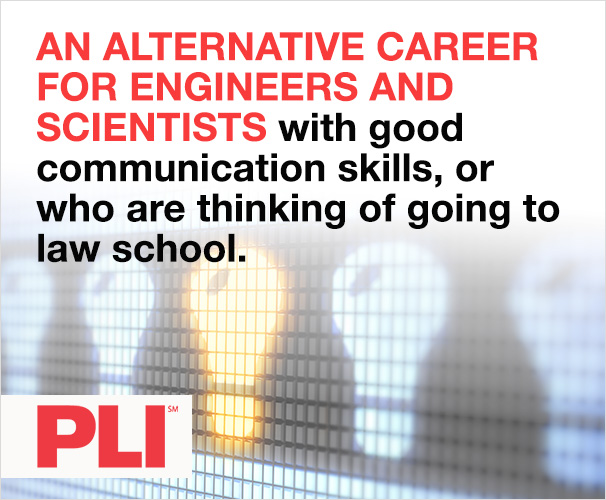In 2021, Hope College’s Boerigter Center for Calling and Career partnered with several computer science majors to develop a custom, interactive application for the college’s students and visitors to see a visual representation of the locations of Hope alumni around the world and their jobs. It also shows current job and internship openings in a given city.
This application—titled “Where Will You Go?”—is presented on an 85-inch interactive touchscreen monitor that is powered by a Chromebook and is located across from the welcome desk in the Boerigter Center.
“We installed it in May of 2021, and it has become an extremely popular attraction on campus, particularly with prospective students and families,” says Shonn Colbrunn, executive director of the Boerigter Center.
2022 NACE Award Winner
The partnership between the Hope College Boerigter Center for Calling and Career and the computer science department is the winner of the 2022 NACE Award for Technology Excellence-College for their development of the “Where Will You Go?” application. For more information about the NACE Awards program and the full list of award winners/honorable mentions, see www.naceweb.org/about-us/nace-awards/.“We know how instrumental alumni are in providing career advice, and we know how important it is for students to network with alumni during their job search. As usage increased, we started looking for an opportunity to visually highlight the importance of these connections and the strength of the Hope alumni network.”
The Boerigter Center team looked at approaches used by other colleges for catching the attention of current and prospective students, and it started to develop and consider ideas. Scott Travis, executive director of alumni engagement at Hope College, was a key collaborator in the design of the application.
“As we began brainstorming ways to meet this need, a preference developed quickly for an interactive interface rather than static posters or digital displays,” notes Travis, whose observations of practices at other universities contributed to the application’s design.
“We wanted the interface to be situated in the welcome area of the Boerigter Center office, since that location receives a lot of foot traffic from students and visitors every day.”
With that in mind, the team established three objectives for the solution:
- The design should provide light, exploratory information for students in a fun way—Students should be able to find something interesting in one minute or less. To get more details about an alumni contact or job opportunity, students are expected to use the actual networking and career management applications.
- The interface should share stories that students can relate to and build confidence—By seeing locations and jobs of alumni around the world, along with some highlighted stories, staff intend for students to see possibilities for themselves after graduating from Hope. Additionally, showing live job postings can provide confidence that many opportunities are available to them.
- The solution should provide a high-tech “WOW” factor that catches the attention of visitors—Staff want to send the message to prospective students and families that Hope College cares about their graduates and their careers. Furthermore, staff want to do this in a way that is visually impressive and unique from what other colleges display.
After laying out its objectives, the Boerigter Center team approached a computer science professor who felt the concept could become a good senior capstone project. Four students worked through an iterative process and delivered the completed application in May of 2021.
The application has three key features:
- Finding alumni—The application displays a world map with markers indicating how many Hope College alumni live in each major region and city. Zooming in and touching the marker reveals a list of alumni with their name, photo, college major, current profession, and employer. The information is always up to date through a data feed from the networking platform. Although not all Hope alumni are displayed, the more than 3,000 who have said they are interested in talking with students about career discernment and job leads are included.
- Viewing career opportunities—This feature also starts with the same map and operates similarly to the alumni feature (with markers and zooming). Touching a marker reveals the list of current job and internship openings in a given city, showing the position title and company. The listings are always updated through a data feed from the career management system.
- Reading alumni stories—The application also features in-depth stories about several alumni the Boerigter Center team has selected to highlight. For each, the application shows a photo, basic information, and a narrative with their calling and career story. An administrative feature allows the team to add or delete stories.
“This application is achieving the outcomes we expected in terms of engaging students and creating a positive impression with visitors and prospective students,” Colbrunn explains.
“Students walk by every day and see a fun, visual reminder of the power of tapping into the Hope College alumni network as they discern their future plans.”
Meanwhile, he continues, future Hope students see an impressive indicator of how the career center and Hope alumni will support their career journey.
“While we can’t take all of the credit for the good things going on at Hope College, we feel the interactive monitor has contributed in part to an unusually high number of new student applications for our next class,” Colbrunn says, noting that as of January 2022, applications were up 15% over the previous year in a time when other colleges are experiencing declining enrollments.
He says that while evaluating a technology application designed for walk-up interactions by unidentified users can be challenging, the Boerigter Center team was able to identify two metrics that demonstrated success in meeting its objectives for the application.
For Objective 1 and Objective 2 above, the Boerigter Center team tracked usage as an indicator of whether students found it engaging and appealing. Specifically, it tracked the increase in “page views” in the networking platform, the system behind the application’s “Find Alumni” tab, its most popular feature.
For the three months before the launch of the interactive monitor, the system averaged 2,732 page views per month. During the six months after the monitor was installed, there were 3,274 average monthly views, for an increase of 20%.
“We attribute this increase to the interactions with our monitor, confirming our observations of students and visitors using it daily,” Colbrunn says.
“To measure Objective 3, we asked our welcome desk student workers to estimate the percentage of visitors that vocalized a positive exclamation when first seeing the monitor.”
They estimated that about 85% of visitors share a positive verbal response, with some visitors surprised to see how many Hope alumni are scattered across the map and others looking at their hometown and finding friends they didn’t realize were Hope alumni.
“We continue to be surprised and delighted by how the interactive monitor has been used in unexpected ways,” says Travis, noting that these include alumni finding themselves on the map and taking a selfie with it.
Another strong sign of continued effectiveness is the fact that others on campus want to replicate the application.
“Using the existing code as a starting point, a team of computer science majors are working this summer to create a similar application for our education department,” Colbrunn says.
“I saw a preview of their version of the application, and I am very impressed how they are taking it to a whole new level. They are including photos of each student majoring in education, where they will be teaching after graduation, where we have student teaching opportunities, and other information.”
For its part, the Boerigter Center is currently working on upgrades and enhancements to its “Where Will You Go?” application. One addition is the “career wheel,” an interactive graphic that allows users to select a Hope College academic major program and then see which industries those graduates have worked in.
“Conversely,” Colbrunn adds, “users can select an industry and see what alumni in that field studied at Hope. It's another way to answer the question, ‘Where will you go?’”
He points to several lessons he and his colleague have learned throughout the development, implementation, and enhancement of Hope College’s “Where Will You Go?” application.
“Our biggest lesson learned is that when you are working on a technology application, it's important to have ongoing support,” Colbrunn says.
“It would have been amazing to develop this product and then have it work perfectly for years. Thanks to the great work of our computer science students who coded the application, it has been highly stable. However, we’ve had a couple of unexpected glitches here and there, which required a technical expert to fix. I'm very grateful to my colleague Dr. Mike Jipping and his students for their continuing support.”
He has several recommendations for other career centers interested in developing a similar application. First, he suggests focusing on the story the career center wants to tell.
“For us,” Colbrunn says, “we wanted to show visitors the broad reach of the Hope College alumni network and the number of career opportunities that are open to our students. Think about what is special for your school and creative ways to highlight that.
“Second, after you design your application, look for opportunities to ‘plus it up.’ I recently spoke with a large university looking to develop a similar application, and members of their team suggested a way to enhance the functionality of our career opportunities feature. Having a fresh set of eyes can lead to increased innovation and a better user experience.”






